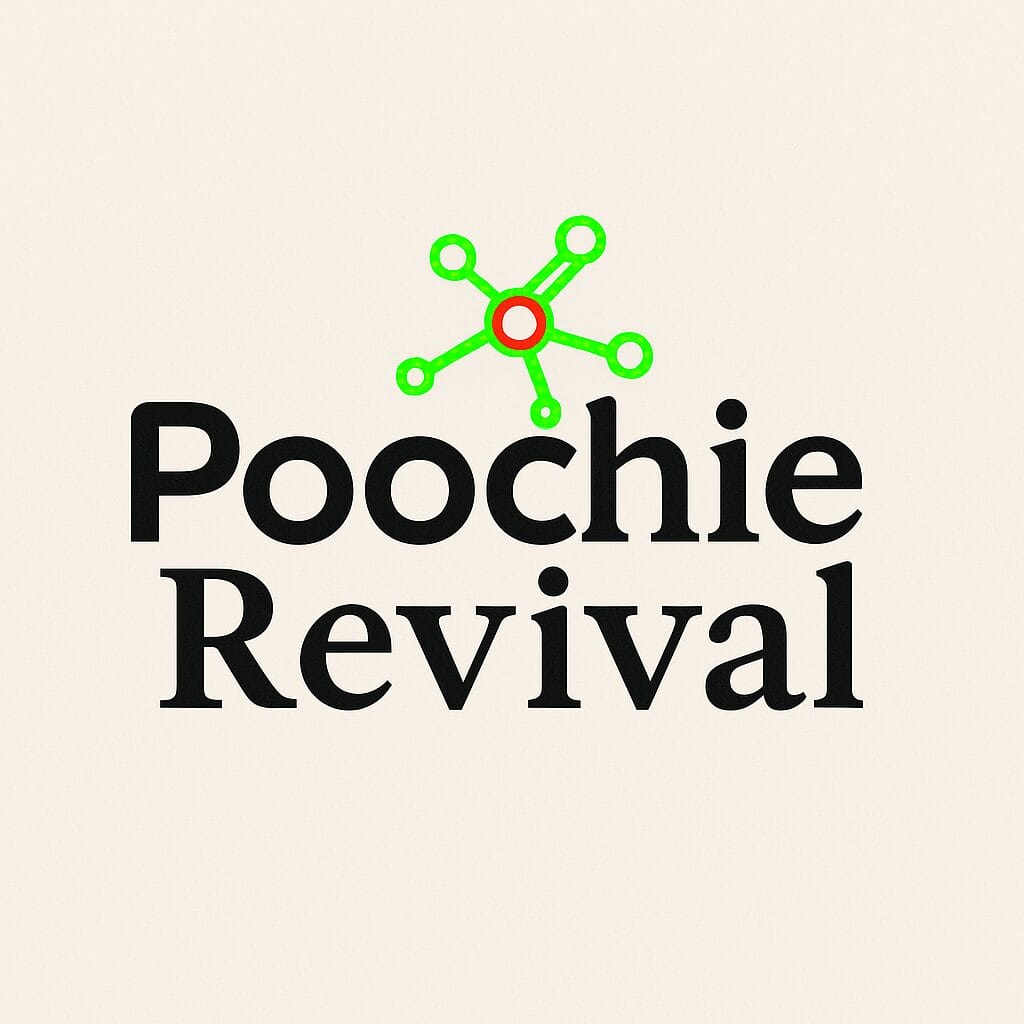Calcium is the most common mineral in the body and a very important electrolyte for muscle and nerve function, while also being the main building block of the skeleton. In puppy nutrition, it is perhaps the most studied component, as researchers have sought to understand its role in bone development and growth disorders.
Despite the volume of research, the connection or lack thereof to joint developmental disorders remains unclear. Another reason for the focus on calcium research is its abundance, as it is readily available in food.
Historical reasons have also influenced the enthusiasm for research, as during the times when calcium studies were most prominent, the roles of vitamins D and K were not as well understood as they are today—and their functions are still not fully known.
A third reason is that calcium research in dogs has been foundational research done for human needs, as osteoporosis in old age and the resulting wrist and hip fractures are significant economic problems throughout the developed world.
Calcium intake is often considered the biggest problem among minerals in feeding, although it is perhaps the easiest. It has gained an overemphasized position. At the same time, the emphasis on calcium’s role in feeding and its importance for a dog’s development and health has gone astray. The essential factor is absolute intake, nothing else, least of all percentage ratios.
If raw feeding includes even a trace of bones, or so-called dog minced meats that contain ground bone, there is practically never a calcium deficiency. Dry foods have been supplemented with enough calcium that deficiency is never an issue. Overall, with calcium, one should consider the possibility of excess more than deficiency.
Intake and Regulation
The skeleton is the calcium reservoir, where it exists as hydroxyapatite Ca10(PO4)6(OH)2. Not only does calcium make the skeleton hard enough to support the body’s posture, but it is also released from there to meet the body’s other needs whenever dietary calcium is insufficient or there is another acute need, such as after exertion.
This so-called free calcium is found everywhere—in the blood, extracellular fluid, and generally in all body cells. Ionized calcium (Ca++) is essential for all information transfer in the body, and it constitutes about half of the free calcium.
The other half is bound to albumin. Without it, intracellular or intercellular signals and nerve signals would not be transmitted. Glandular secretion would fail without free calcium, and a considerable number of enzymatic reactions would not occur. The body’s calcium level is maintained almost constant within a very narrow range and is probably the most tightly regulated homeostasis, balance, in the body. This importance is linked to calcium’s role in regulating the body’s pH balance.
When a dog eats food containing calcium, whether it’s a chicken leg quarter or calcium-supplemented dry food, the actual absorption of calcium occurs in the intestines. The calcium from food mixes with digestive fluids’ calcium, and the entire mixture is absorbed in the small intestine either passively or actively, which also requires energy.
Active absorption is the most important and efficient, and here comes into play perhaps the best friend of calcium supplements: vitamin D. Active absorption is entirely dependent on the function of 1,25-dihydroxy-D3-vitamin (1,25(OH)2D), and if there is a deficiency of vitamin D, not much absorption occurs actively or enhanced.
And if you want to make the matter even a bit more complicated, that’s not enough. Total absorption is also strongly influenced by reabsorption from intestinal fluid and the secretion that occurs there.
The unfortunate situation for puppies is that active absorption starts only around six months of age. The good news is that it doesn’t matter unless the amount of calcium in the food is drastically reduced.
Active Absorption
An adult dog is capable of regulating calcium absorption. Depending on the dog’s current needs, it absorbs between 0 – 80% (or 90, depending on the source or method of calculation) of the available calcium. Available does not always mean the same as the total calcium in food, but if the food source of calcium, often bone, dissolves in stomach acids, then calcium is available.
If food contains enough calcium, it is absorbed passively, without needing to enhance absorption. But if there is less calcium in the food, then with the help of vitamin D, enhanced absorption through active regulation is initiated.
An adequate amount is considered to be 1.1% of dry matter, and less (i.e., apparently insufficient) is 0.55% DM. This is why 1.1% is considered so important in puppy foods.
But there is a catch that is never mentioned. A percentage alone is nothing; it is merely a ratio, one out of a hundred. 1.1% calcium of dry matter is sufficient to meet a puppy’s calcium needs without active absorption only on the condition that the puppy eats the calculated correct amount of food, i.e., receives the necessary amount of calcium grams from the food.
Thus, 1.1% is tied to the energy content of the food.
- If more food than calculated is given, the puppy also receives more calcium than its need, but still, 1.1% holds true.
- If the puppy eats less, and receives fewer grams of calcium, it will develop a calcium deficiency despite the percentage being the correct 1.1%.
In that situation, an adult would try to enhance calcium intake through active absorption, but the puppy is unable to do so.
1.1% is Recipe
1.1% of dry matter is a rule for dry food manufacturers, based on two reasons.
The first is that with the same recipe, every dog, regardless of age or breed, receives a sufficient amount of calcium, but not excessively.
The food contains 1.1% DM calcium, and a 30 kg dog eats 500 grams of it.
- It then receives 3.3 grams of calcium.
- From this, it absorbs passively 0 – 80%, and if we take the familiar 40% absorption from puppies as the limit, it receives 2.2 grams of calcium.
- Its need is 1.7 grams.
The 1.1% recommendation is therefore about nothing more than ensuring that the dog receives the necessary amount of calcium with the 40% passive absorption borrowed from puppies. Therefore, this emphasis in feeding is completely unnecessary.
The second reason is the lifelong phosphorus and calcium ratio. Due to raw materials, phosphorus is always in the range of 0.8 – 1% of dry matter, and if the Ca/P ratio is to be maintained, calcium must be at least 1.1.
The feeding regulations that have guided feeding for the last few decades are therefore not based on anything other than recipe and Ca/P ratio. They have no significance for calcium absorption, utilization, or intake. In wet food, there would need to be about 0.5% calcium to meet the calcium requirement. Assuming 65% moisture, it would be about 1.5% of dry matter.
Percentages and ratios are meaningless unless always comparing the same thing, and for a dog, only the grams consumed are essential.
Puppy Regulation
With puppies, the issue is slightly more complicated, but only slightly.
In puppies under 5 – 6 months of age, active regulation does not work. They are therefore unable to enhance calcium absorption, but always absorb 40 – 80% of the food’s calcium, at least in theory. At the same time, their ability to excrete calcium is limited.
A puppy thus always absorbs at least 40% of the calcium it receives, so in principle, overdosing is harmful concerning calcium itself, unlike in adults. The ability to regulate absorption begins to develop at 12 – 16 weeks of age and is fully functional by 6 months of age, at the same time as the need decreases. During this time, intake should be monitored more carefully. This is why only balanced foods can produce a puppy with healthy bones—or so it is claimed.
The lack of regulation is not significant in passive intake, i.e., the magical 40% that is always absorbed. The essential point is that the puppy cannot actively regulate, i.e., increase calcium intake when the amount of calcium in the food decreases. This is a reasonably important issue because it has been used to justify several decisions in puppy feeding for a long time, so let’s further explore what passive absorption means in practice.
The Puppy’s Need is Essential
If a 10 kg puppy’s calcium requirement is 3823 mg and it is given a whopping 10 grams or 10000 mg of calcium, with 40% absorption, it receives 4000 mg. That difference has no significance. When bioactivity is added to the equation, meaning that generally 40 – 50% of most calcium forms are absorbed, the real risk of overdose is zero.
Not to mention if those amounts were attempted to be obtained from bone, where about 20% of the weight is calcium. To get 10 grams of calcium for the 10 kg puppy in the example, it would need to eat 50 grams of pure bone. Since about a third of the weight of wings is bone, it would require 150 grams of wings, and not even be at the risk limit, i.e., the amount that should not be exceeded is 1250 mg/kgME—in this example, 7029 mg as calcium.
So the risk is not entirely zero, because one should never underestimate people’s ability to make foolish decisions. It is possible to give such large amounts of calcium or bone that it causes ossification disorders and tissue mineralization over a six-month period, but it requires considerable effort. Assuming, of course, that the puppy survives and does not die from intestinal obstruction.
The greater risk might be insufficient intake. According to the commonly used definition, which is notably inaccurate and even wrong and actually causes excess intake without causing problems, a weaned puppy should receive at least 560 mg/kgME of calcium.
Since it is nearly five times more than for an adult, owners’ internal gauges in practical dosing may fail.
But we go around and come back to the “inability” to regulate absorption, i.e., always absorb passively 40%. Due to the high minimum intake, we can’t really even talk about the inability to regulate, because in the real world, that 40% rule is only ensuring that the minimum intake is met.
Let’s make the matter a bit more complicated.
The puppy’s active calcium regulation begins to develop around 16 weeks of age and is fully functional by about 6 months. In dwarfs, everything starts earlier, and active regulation works effectively by at least 4 months. It can be said that regulation works normally when the growth peak is reached, i.e., the moment when the growth rate is at its highest—for large breeds, it is around five months of age.
If all breeds, regardless of size, are lumped into the same formula, the calcium requirement is
- 630 mg/kgME until four months of age,
- 315 mg/kgME until six months of age, and from there
- to nearly a year of age, the same or only slightly above the adult requirement.
Weaned Little Puppies
When little puppies are weaned, the calculations generally use the more commonly known puppy requirements, such as about 14 g/kgME for protein and 630 mg/kgME for calcium. However, this is not the need of little puppies, but their average intake from the mother’s milk.
But no one can regulate food for weaned puppies according to those metrics, nor should they. Little puppies are given as much high-quality animal protein and fat as they can eat.
Offering meaty bones is pointless when they don’t have much chewing power, so the bone must be ground into the mix, or a calcium supplement is used. If calcium is obtained from a supplement (or similar), then the total amount can be calculated for all puppies. The one who eats the most gets the most, and the one who eats the least gets the least, and the amounts then follow the puppies’ needs closely enough.
Calcium does not need to be worried about until the mother stops nursing, or most of the food consumed is solid. If the mother feeds the “puppies below,” i.e., in the whelping box, the right time to start solids is when the puppies show interest in the mother’s food. Another sign is the slowing of the puppies’ weight gain. Then milk is no longer sufficient as nutrition. Usually, the puppies also become restless and try to eat constantly.
Regarding calcium, the safest choice is to try to calculate the amount through the newborns’ intake of 630 mg/kgME. Emphasis on the word “try,” because calcium amounts cannot be practically dosed every day with a different amount—not to mention puppy-specific feeding. Nor is it necessary, because even though growth is rapid, we are talking about a period of a few weeks. The main thing is that there is enough.
For little puppies, using adult weight as a basis for calculation does not work. Owners use adult weight.
Intake Recommendation
In raw feeding, enough calcium is obtained when the food contains bones at one gram per weight kilo, or when ground bone in the food provides about 0.5% of the food’s wet weight in calcium.
- for adults 130 mg/kgME or 60 mg/kgEP
- 630 mg/kgME until three months of age (or slightly over 500 mg). Or by the formula total puppy weight x 400 mg, and all eat from the same bowl
- 315 mg/kgME until six months of age, and from there to nearly a year of age, the same or only slightly above the adult requirement calculated from the assumed adult weight
- in the food bowl, calcium grams are always multiplied by two, thus considering absorption
The most essential thing to understand in the recommendations between puppies and adults is that despite everything, there is no difference. All fit within the same range when fed according to energy needs.
It is often said that energy intake cannot be used as a measure of calcium intake due to size differences, and therefore balanced puppy foods, preferably breed-specific, are the only safe way to feed. The claim is completely absurd.
If we imagine that calcium is balanced at 1.1 – 1.4 percent, energy intake still determines calcium intake regardless of brand and breed issue. Puppies of the same size can have considerable differences in consumption, which means they eat different amounts of food and automatically get different amounts of calcium.
The fact that all dry foods on the market have practically the same amount of calcium, but the energy content, i.e., the fat content of the foods, varies greatly even between puppy foods, regardless of the size difference between breeds (and puppies), completely shatters the notion of balanced dry foods.
A percentage always gives the same amount per hundred grams, for example, 1.1 grams of calcium, making the amount of food consumed essential, and if the amount of food is to be kept roughly the same for everyone in the name of calcium, then the amount of fat in the food should be varied in the name of activity. The differences between foods are not that great.
The impossibility of balancing is best seen in nursing puppies. The mother’s milk consistently contains 1.2% calcium, regardless of the amount, quality, and breed of the mother. However, the amount that puppies suckle on a daily basis varies significantly within the litter and the same breed.
According to all the doctrines based on percentage calculations and preaching balance, the mother’s milk would then be anything but balanced and healthy for the skeleton, sowing the first seeds of growth disorders.




